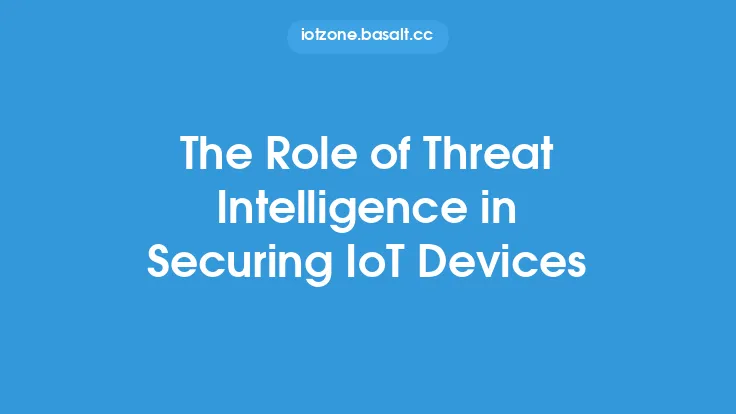The Internet of Things (IoT) has revolutionized the way we live and interact with devices, from smart home appliances to industrial sensors and actuators. As the number of connected devices grows, so does the need for secure communication protocols to protect the data exchanged between these devices. One such protocol that plays a crucial role in securing IoT communications is Transport Layer Security (TLS). In this article, we will delve into the world of TLS and its significance in ensuring the confidentiality, integrity, and authenticity of IoT communications.
Introduction to TLS
TLS is a cryptographic protocol that provides end-to-end encryption for communications over the internet. It is an extension of the Secure Sockets Layer (SSL) protocol, which was widely used in the early days of the web. TLS is designed to provide a secure channel for data exchange between a client and a server, ensuring that any data transmitted between the two remains confidential and tamper-proof. In the context of IoT, TLS is used to secure communications between devices, as well as between devices and the cloud or other external services.
How TLS Works
TLS works by establishing a secure connection between a client and a server through a handshake process. This process involves the exchange of cryptographic keys and certificates, which are used to authenticate the identities of the client and server and to establish a shared secret key. The shared secret key is then used to encrypt and decrypt all data exchanged between the client and server. The TLS handshake process involves several steps, including:
- Hello: The client sends a "hello" message to the server, indicating its support for TLS and the version of the protocol it uses.
- Certificate: The server responds with its digital certificate, which contains its public key and identity information.
- Key Exchange: The client and server exchange cryptographic keys, which are used to establish a shared secret key.
- Change Cipher Spec: The client and server notify each other that they will begin using the shared secret key to encrypt and decrypt all future communications.
- Finished: The client and server verify that the handshake process was successful and that the shared secret key is being used correctly.
TLS in IoT Communications
In IoT communications, TLS is used to secure data exchange between devices, as well as between devices and the cloud or other external services. IoT devices often have limited computational resources and memory, which can make it challenging to implement TLS. However, many IoT devices use lightweight TLS implementations, such as TLS-PSK (Pre-Shared Key) or TLS-ECDHE (Elliptic Curve Diffie-Hellman Ephemeral), which are designed to be more efficient and require fewer resources.
TLS is particularly important in IoT communications because it provides a number of security benefits, including:
- Confidentiality: TLS encrypts all data exchanged between devices, ensuring that it remains confidential and cannot be intercepted or read by unauthorized parties.
- Integrity: TLS ensures that all data exchanged between devices is tamper-proof, meaning that it cannot be modified or altered during transmission.
- Authenticity: TLS authenticates the identities of devices and ensures that they are communicating with the intended party.
Challenges and Limitations of TLS in IoT
While TLS is an essential protocol for securing IoT communications, it also presents several challenges and limitations. Some of the key challenges and limitations of TLS in IoT include:
- Computational Overhead: TLS requires significant computational resources, which can be a challenge for IoT devices with limited processing power and memory.
- Certificate Management: TLS requires the use of digital certificates, which can be difficult to manage and maintain, particularly in large-scale IoT deployments.
- Key Exchange: The TLS key exchange process can be complex and require significant computational resources, which can be a challenge for IoT devices.
- Interoperability: TLS is not always interoperable between different devices and platforms, which can make it challenging to implement and manage.
Best Practices for Implementing TLS in IoT
To ensure the effective implementation of TLS in IoT communications, several best practices should be followed, including:
- Use Lightweight TLS Implementations: Use lightweight TLS implementations, such as TLS-PSK or TLS-ECDHE, which are designed to be more efficient and require fewer resources.
- Optimize Certificate Management: Optimize certificate management by using automated certificate issuance and revocation processes.
- Implement Secure Key Exchange: Implement secure key exchange processes, such as elliptic curve cryptography, to reduce the computational overhead of the TLS handshake process.
- Ensure Interoperability: Ensure interoperability between different devices and platforms by using standardized TLS implementations and configurations.
Conclusion
In conclusion, TLS is a critical protocol for securing IoT communications, providing confidentiality, integrity, and authenticity of data exchanged between devices. While TLS presents several challenges and limitations in IoT, including computational overhead, certificate management, and interoperability, these can be addressed by following best practices, such as using lightweight TLS implementations, optimizing certificate management, and ensuring interoperability. As the IoT continues to grow and evolve, the importance of TLS in securing IoT communications will only continue to increase, making it essential for IoT developers and implementers to understand and effectively implement this protocol.





